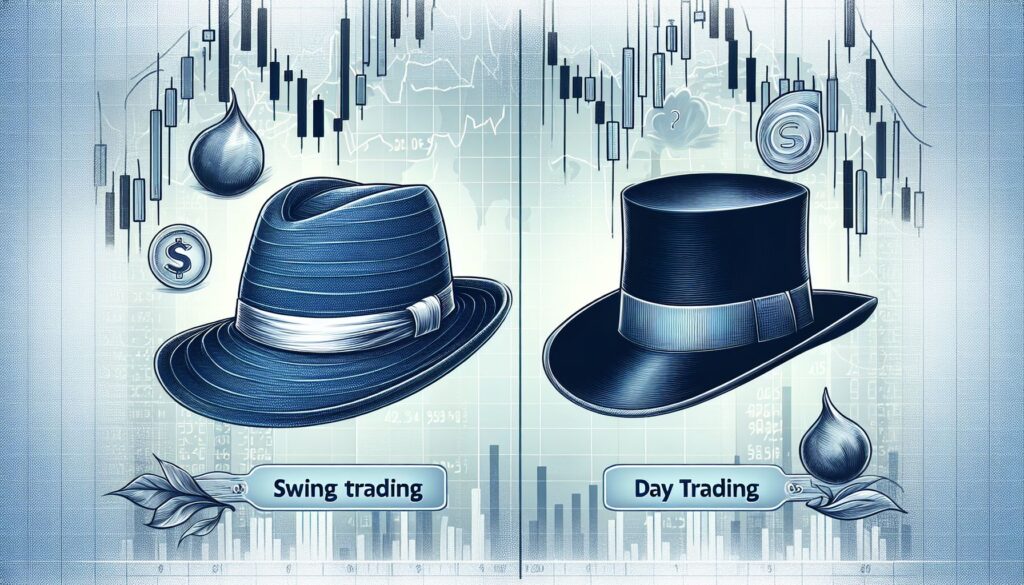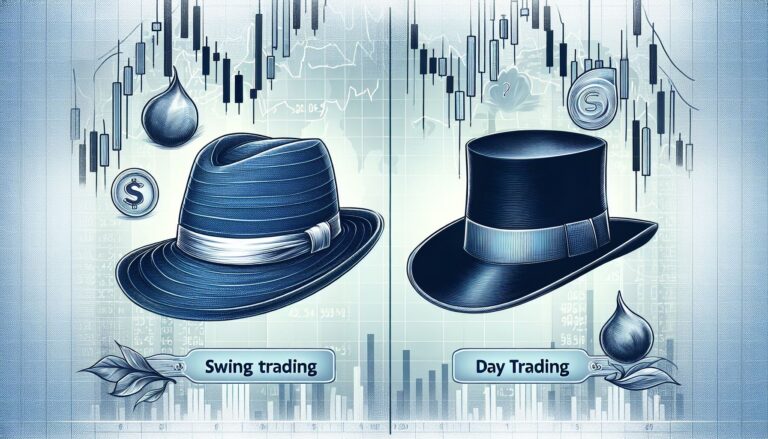Two Hats in Trading: Unpacking Swing Trading Vs Day Trading
Trading is an integral part of the financial markets, and seasoned speculators utilize various strategies to profit from market volatility. Among the common approaches are swing trading and day trading. As an active trader, it’s essential to understand these trading methods to align them with your financial goals, risk tolerance, and preferred trading style. This article compares swing trading vs day trading, highlighting their unique features, benefits, and downsides.
What is Swing Trading?
Swing trading is a strategy that entails holding a stock or other financial instruments for several days or weeks to capture potentially profitable price swings. Traders use fundamental and technical analysis to predict the price changes of a security within this period. The overarching aim is to benefit from short- to medium-term price movements.
Pros of Swing Trading
- Lower Time Commitment: Since swing trades occur over several days or weeks, it requires less time in front of the screen compared to day trading.
- Diversification: Swing trading allows for more diversification as you can hold several positions at a time.
- Lower Transaction Costs: Swing traders have fewer transactions, translating to lower commission costs.
- Potential for Higher Profits: Swing traders can potentially realize larger returns due to the longer trading period.
Cons of Swing Trading
- Overnight and Weekend Risks: Holding positions for days or weeks exposes you to the unpredictability of the market outside of trading hours.
- Bigger Stops: Swing trading often necessitates larger stop losses, which could increase potential losses.
- Harder to Master: Swing trading can be trickier for beginners, as it requires a deeper understanding of technical analysis and the market overall.
What is Day Trading?
Day trading refers to buying and selling securities within a single trading day. The goal is to profit from small price movements throughout the day. At the close of the market, day traders typically have no open positions.
Pros of Day Trading
- Profit Potential: Day traders can make numerous trades in a day, providing frequent profit opportunities.
- No Overnight Risks: Since day traders do not hold positions overnight, they face no risks from potential overnight market volatility.
- Greater Leverage: Many brokers provide more leverage for day traders, which could maximize profits.
Cons of Day Trading
- High Stress and Time Commitment: Day trading requires an immense time commitment and delivers high levels of stress as traders must closely monitor market movements.
- Higher Transaction Costs: With more trades come more commission costs.
- Quick Decision Making Required: Fast-paced trading can lead to hasty decisions and potentially large losses.
Swing Trading Vs Day Trading: Which One is For You?
Deciding between swing trading and day trading often boils down to your personality, lifestyle, risk tolerance, and trading experience. If you can withstand high stress levels, have sufficient time to monitor the markets, and can make rapid decisions, day trading may suit you. However, if you prefer slower-paced trading that allows you to delve deeper into technical analysis while managing other commitments, you might find swing trading more appealing.
Understanding the intricacies of both swing trading and day trading can empower you to make more informed trading decisions, enhancing your trading experience and potentially boosting your profits. Remember to undertake thorough research, practice risk management, and continually educate yourself along your trading journey.
In conclusion, there is no one-size-fits-all answer when it comes to choosing a trading strategy. It’s all about choosing a path that aligns with your short and long-term trading goals and suits your personal trading style. Whether you’re a swing trader or a day trader, the ultimate objective is the same: consistent profits in the financial markets.

